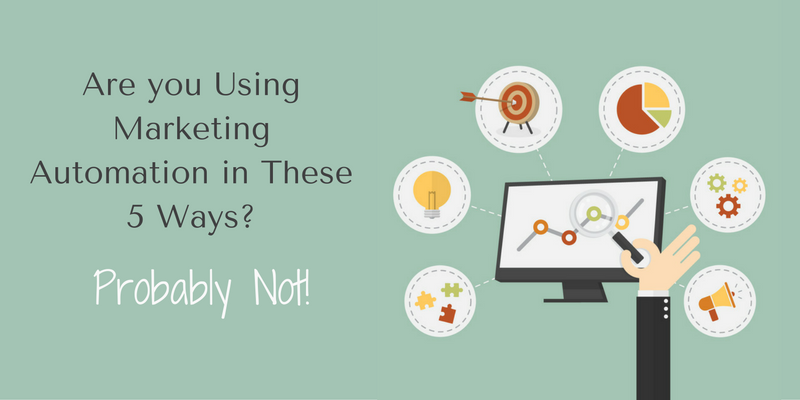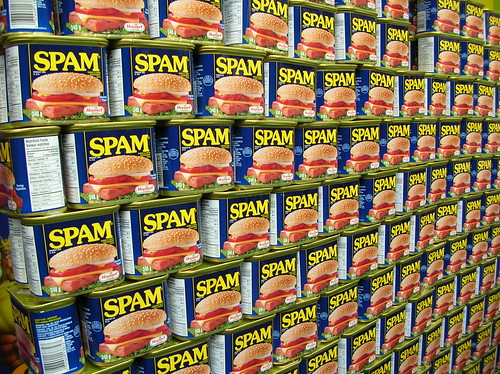Marketing automation is a fantastic way to ensure that you’re sharing consistent, relevant and valuable information with your customers, both new and potential.
It streamlines a repetitive process so that you don’t waste your time.
Automation itself isn’t a particularly new idea.
We’ve been doing it for a while in the form of “lifehacks” or “shortcuts” in our daily routines.
Our parents taught us some of them: Setting your alarm so that it goes off at the right time every morning (but only during weekdays), for example.
And as we got older (and technology got better) we began to automate other things too.
For example, paying our bills automatically through direct deposits or recording our favorite TV shows.
With busy lifestyles being more and more the norm, it just makes sense.
So, why then are we so stubborn to adopt this same thinking to all of our marketing strategies?
Does it just seem too easy?
Are we afraid to become obsolete or lazy if we rely to heavily on marketing automation?
Here is the perfect opportunity for us to learn something from the initial marketing difficulties that Betty Crocker’s ready-made cake mix came into contact with.
If you haven’t heard the story, it’s very simple: In the 1950s when General Mills first tried to sell cake mixes under the famous brand of Betty Crocker, people refused to buy it. The mix that contained all the ingredients needed to make a cake, plus powdered milk and eggs, just needed the baker to add water.
It seemed like it would be a raging success.
It wasn’t.
Consumed by guilt, housewives (who were the target audience) refused to buy it.
It seemed too easy.
It felt like cheating.
It made their jobs (which at the time, was often to be a housewife) seem obsolete.
So what did Betty Crocker do to get its products selling?
Well, they added an extra step.
People now had to add an egg to the pre-made cake mix. This made them feel more useful, less like a fake and guess what? Sales skyrocketed.
Similarly, people seem to have some sort of guilt over marketing automation.
Marketing Automation (when done right) Should Be Guilt-Free
Here’s the thing: Marketing automation isn’t easy.
Automating certain marketing activities won’t make you an overnight success.
You still have to work really hard to craft those emails, to intelligently nurture those leads, to create content that people want to be reading and sharing.
And marketing automation won’t put you out of a job.
If anything, you’ll probably be busier because you’ll have even more customers and more activity with those customers to work with.
What automation will do is make those activities consistent, helpful and smart.
- No more letting leads slip through your fingers.
- No more ranking low in SERP’s because you forgot to add in a H1 tag.
- No more quiet social media platforms.
1. Marketing Automation for your Social media sharing
With so many different platforms out there, each one requiring a lot of attention to be effective, it’s hard to keep on top of them all.
Automating your social media distribution will ensure that you’re regularly reaching out to your audience.
I know what you’re thinking:
Social is all about being personal. You can’t automate that.
My answer is: Why can’t it be both?
Yes, social should be personal. Your FB posts and tweets should not read like a robot. People will just ignore that.
But social should also be just that: Social. And we can’t be social 24/7 without killing ourselves.
The best idea is to automate your content distribution, but then go back and edit each post, tweet, picture, review etc. so that you can infuse it with a bit of personality. Don’t forget to also automate some curated content (that’s not your own) so that you are providing your customers with interesting and engaging information, rather than pushing your own stuff.
If you’re using Spokal already, you know that it has a fantastic feature that works as a drag and drop calendar to share (and edit) your social distribution:
Not on Spokal? Not to worry, there are also other fantastic social sharing automation platforms too, such as Social Oomph.
2. How to Automate Your SEO
Ok, I’m guilty of a misleading heading here.
You can’t really automate SEO.
Not effectively anyways.
But, I’ve gotten to a point in my SEO that it almost does feel like automation, it’s that easy and quick.
It is definitely a process that you can streamline using certain tools that can work as guides while you work.
That’s kinda like automation, right?
There are a ton of tools for this, from The Portent Title Generator, to SEO Site Check Up. The internet is full of incredibly useful tools that will guide your content in the right (and more searchable) direction.
With Spokal, you get real-time SEO advice as you right your content, so it actually gives you automated SEO advice in a way, which is awesome.
But my general point is that while you can’t necessarily “automate” your SEO, you can create super effective and streamlined workflows that can try and test your SEO so you never miss a beat.
Want to learn more about SEO? Check out The Absolute Basics of SEO for Content Marketing Newbies
3. Marketing Automation for Topic-Specific Lead Nurturing
Like most people, I’m not a huge fan of spam.
And I’m sure you’re not either.
But there’s a really specific line that a lot of marketers cross that quickly turns their marketing emails into spammy emails (even if the consumer has opted in for them).
What is it?
Off-topic emails.
Off-topic emails are one the best ways to get people to unsubscribe fast.
If you sign up for more information on, say, spoon bending, you don’t want to be receiving emails related to trips to the zoo.
I like to think of topic-specific lead nurturing like selling scarves to someone who’s wearing a scarf and who’s looking at the scarf section. It’s obvious that that’s what they’re looking for, so why would I try to push watches when it’s not relevant?
According to the Aberdeen Group, personalized emails improve click-through rates by 14% , and conversion rates by 10%.
But this also means creating a whole lot of content, so many marketers are reluctant to tackle this workload.
Being specific will nurture your leads in an efficient (and not overwhelming) way.
Of course, this doesn’t change your Sales Funnel approach: You still have content that you share specifically with your Top, Middle and Bottom of funnel customers.
However, with topic-specific email marketing automation, you just segment these stages up into different groups more specifically.
Instead of every lead at the top of the funnel being sent the same email with the same content, you can adjust it slightly.
For example, if someone signs up after reading “The Beginners Guide to Lion Taming” you can send them more information from to help them learn as a beginner. However, if someone signed up after reading your blog on “Advanced Lion Grooming Skills”, then beginner-focused content might seem a tad irrelevant.
Mailchimp and most ESP’s have an easy to set up email segmentation options, so take advantage of it and the right content to the right people.
4. Marketing Automation for Abandoned Shopping Carts
In 2013, as many as 74% of online shopping carts were abandoned by shoppers, according to Barilliance.
But does that mean that all hope is lost?
No!
BI Intelligence estimates that approximately 63% of that is potentially recoverable by savvy online retailers.
Abandoned carts are a great opportunity to push sales without seeming too… well… salesy.
With abandoned carts, you already know that the consumer was interested in purchasing with you. But you also know that something happened at the last moment to dissuade them.
Use this information.
Send them an email to prompt them back into action.
You can easily automate these emails to encourage a sale by:
- Offer free shipping
- Offer a discount or coupon
- Remind them that they haven’t completed their purchase
- Show scarcity (if there is some) by reminding them that there are only a few items in stock left.
And don’t forget to act quickly because emails sent three hours after a consumer abandons a cart, average a 40% open rate and a 20% click-through rate.
5. Marketing Automation to Re-engage Inactive Leads
Like the shopping cart dilemma, marketers have a tendency not to reach out to people who might have once shown interest, but not anymore.
I’m not talking about spamming them until they unsubscribe from your list.
But if you have data that there are consumers on your email list that haven’t even opened an email in 3 months, even though they rank highly in your leads scorer, then think about setting up an automated email to those guys.
But not just a reminder, or a quick hello.
You want to catch their attention, not bore them.
Send them something that will encourage reengagement, like a coupon, another free trial, a discount or an exclusive offer.
Are there any other areas of business that you see people failing to include in their marketing automation efforts? Let us know!










